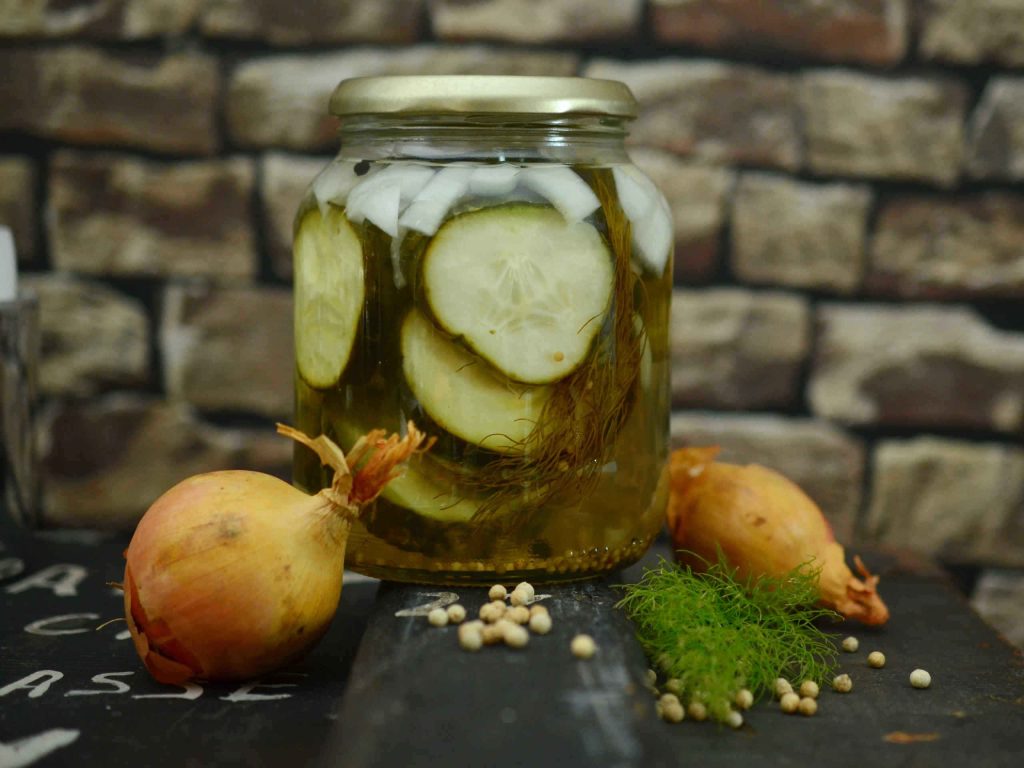In times when restaurateurs and hoteliers are increasingly growing their own vegetables, old-school preservation is just the thing. Fermentation has several advantages: The food is preserved in a natural way, it does not require electricity for storage and the flavors released during fermentation are exceptional. What’s more, the process is very simple and can be used in any type of business, from a la carte restaurants to system caterers – the use of fermented products is unlimited in terms of quality and quantity. It is important to be careful with salt, which is the basis of every fermentation – in granular form or as brine. Too little promotes spoilage, too much makes the product difficult to use.
The most famous of all fermented foods in this country is sauerkraut. But chocolate, kefir, cocoa, beer, cheese and sourdough bread are also produced by fermentation. Many fermented foods can be found in Asian cuisine in particular. Such as the Korean classic kimchi - spicy pickled white cabbage. Or tempeh, which is made from fermented soybeans and is a popular vegan meat substitute. Miso has also undergone a fermentation process before it ends up on your plate.
In principle, all vegetables are suitable, but it works particularly well with vegetables that are not too soft, such as cabbage, root vegetables, beans, beet, pumpkin or peppers.

At first glance, Mind Set Win looks like a sports book—but it is actually a real coaching tool for anyone working in high-stress industries. Whether you’re a chef, hotel manager, or project manager, this book is all about concentration, self-management, and mental endurance.
The variety of perspectives is fascinating: from Max Verstappen to Lindsey Vonn, top athletes talk openly about pressure, failure, and mental routines. The accompanying exercises are suitable for everyday use, well-founded, and developed by professionals in psychology and coaching.
Particularly valuable are the chapters on focus and flow—a topic that is especially relevant in the hospitality world, where guest requests, team leadership, and self-motivation are daily concerns.
INFO
Mind Set Win—The mental techniques of top athletes and how we can use them for ourselves
Publisher: Benevento
240 pages
ISBN: 978-3-7109-0209-3
Price: €30.00 / CHF 40.90
It doesn’t take much to bring people together – sometimes all you need is tomatoes, pasta, and a pinch of history. In Pasta al Pomodoro, author Ilse Fischer focuses on a classic dish that is much more than just noodles with sauce: it is a symbol of community, memory, and flavor in its purest form.
The idea came about when Fischer tasted three-star chef Niko Romito’s signature dish, “Spaghetti e Pomodoro” – simple, clear, and yet stunningly deep. “Few ingredients, simple preparation, unique taste,” she recalls. And this experience became the starting point for a project that combines culinary art, emotion, and culture.
In 55 variations, she shows how differently and yet how closely connected this classic dish can be interpreted—from Italian nonnas to culinary greats such as Heinz Reitbauer, Andreas Caminada, Johann Lafer, Norbert Niederkofler, Rudi Obauer, and Tina Marcelli. Even artists and actors such as Philipp Hochmair and Walter Grüll contribute their personal versions.
INFO
Pasta al Pomodoro – 55 variations on the Italian classic
Author: Ilse Fischer
Photography: Ingolf Hatz
Foreword: Placido Domingo
Publisher: Christian Verlag GmbH
Length: 208 pages
ISBN: 978-3-95961-958-5
Price: €30.90 (D/A)
When Mediterranean lightness meets Andalusian temperament, the result is a menu that is more than just an arrangement of courses: it becomes a narrative about origins, freedom, and the longing for new perspectives. In December 2025, two-star chef Álvaro Salazar from VORO in Mallorca will take over as guest chef of the month at Restaurant Ikarus – and take Salzburg on a sensory journey between Andalusia and the Balearic Islands.


In times when restaurateurs and hoteliers are increasingly growing their own vegetables, old-school preservation is just the thing. Fermentation has several advantages: The food is preserved in a natural way, it does not require electricity for storage and the flavors released during fermentation are exceptional. What’s more, the process is very simple and can be used in any type of business, from a la carte restaurants to system caterers – the use of fermented products is unlimited in terms of quality and quantity. It is important to be careful with salt, which is the basis of every fermentation – in granular form or as brine. Too little promotes spoilage, too much makes the product difficult to use.